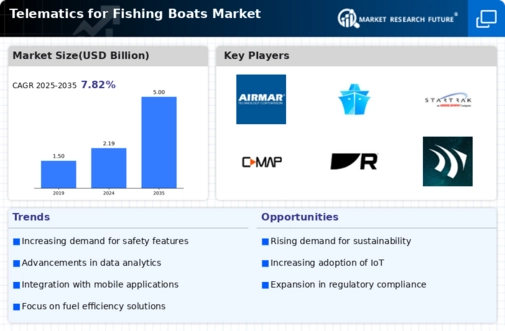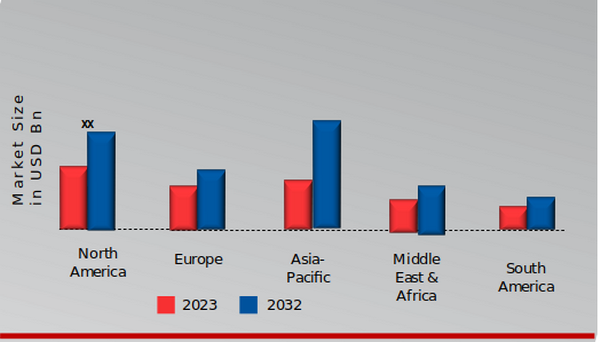Regulatory Compliance
Regulatory compliance is a critical driver for the Global Telematics for Fishing Boats Market Industry. Governments worldwide are implementing stringent regulations to ensure sustainable fishing practices and protect marine ecosystems. These regulations often require the use of telematics systems for monitoring fishing activities, catch reporting, and adherence to quotas. As a result, fishing operators are increasingly adopting telematics solutions to meet these compliance requirements. This trend is likely to contribute to the market's growth, as companies seek to avoid penalties and enhance their operational transparency. The anticipated CAGR of 7.79% from 2025 to 2035 underscores the importance of compliance in driving market expansion.
Enhanced Safety Features
Safety is a paramount concern in the fishing industry, driving the demand for telematics solutions within the Global Telematics for Fishing Boats Market Industry. Advanced telematics systems offer features such as collision avoidance, emergency alerts, and weather monitoring, which significantly enhance the safety of fishing operations. These features are particularly crucial in remote and hazardous fishing environments. As safety regulations become more stringent, fishing operators are likely to invest in telematics systems to protect their crews and vessels. This focus on safety is expected to contribute to the overall growth of the market, as operators seek to mitigate risks and ensure compliance with safety standards.
Market Growth Projections
The Global Telematics for Fishing Boats Market Industry is poised for substantial growth, with projections indicating an increase from 2.19 USD Billion in 2024 to 5 USD Billion by 2035. This growth trajectory reflects a compound annual growth rate (CAGR) of 7.79% from 2025 to 2035. Factors contributing to this expansion include technological advancements, regulatory compliance, and the increasing demand for sustainability in fishing practices. As the industry evolves, telematics solutions are becoming integral to operational efficiency and safety. The anticipated growth underscores the market's potential as stakeholders recognize the value of data-driven decision-making in fishing operations.
Technological Advancements
The Global Telematics for Fishing Boats Market Industry is experiencing rapid technological advancements that enhance operational efficiency and safety. Innovations such as GPS tracking, real-time monitoring, and automated reporting systems are becoming increasingly prevalent. These technologies enable fishermen to optimize routes, reduce fuel consumption, and improve catch rates. For instance, the integration of IoT devices allows for continuous data collection, which can lead to better decision-making. As a result, the market is projected to grow from 2.19 USD Billion in 2024 to an estimated 5 USD Billion by 2035, reflecting a growing reliance on technology in the fishing sector.
Increased Demand for Sustainability
The Global Telematics for Fishing Boats Market Industry is witnessing a heightened demand for sustainability in fishing practices. Consumers and regulatory bodies are increasingly advocating for environmentally responsible fishing methods. Telemetry systems facilitate sustainable practices by providing data on fish populations, habitat conditions, and environmental impacts. By utilizing telematics, fishing operators can make informed decisions that align with sustainability goals. This shift towards sustainable fishing is not only beneficial for the environment but also enhances the market appeal of telematics solutions. The growing emphasis on sustainability is expected to further propel the market's growth trajectory in the coming years.






















Leave a Comment